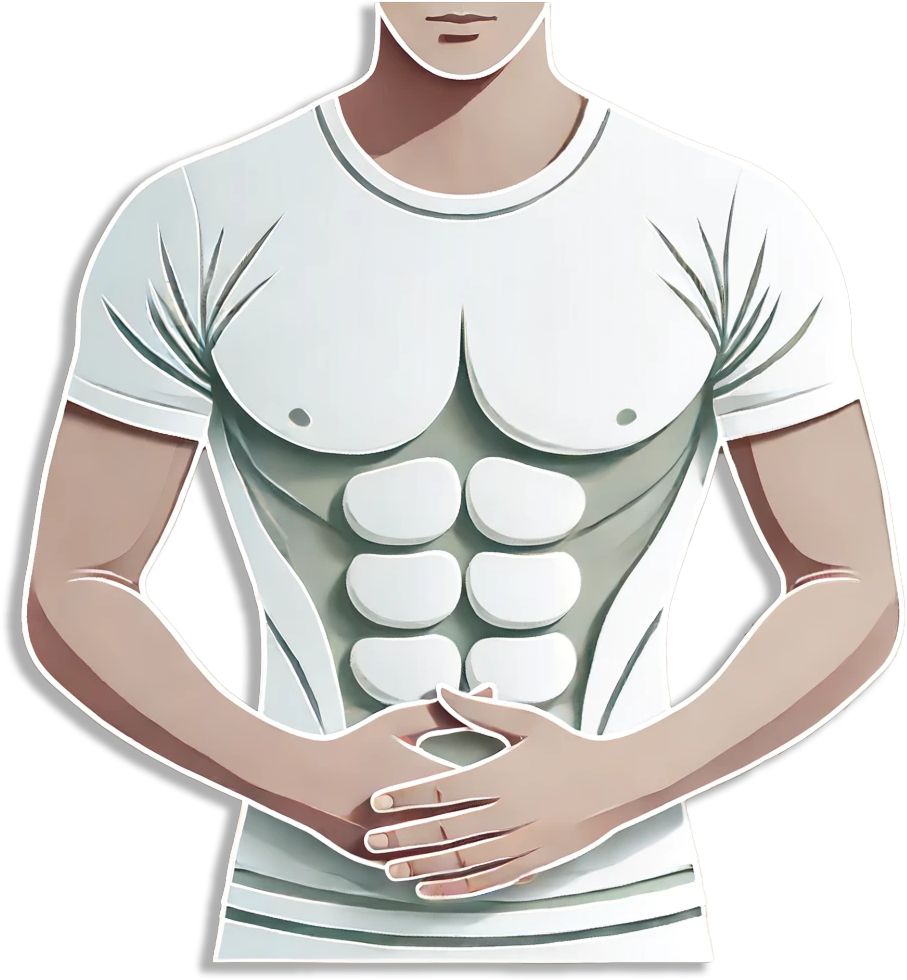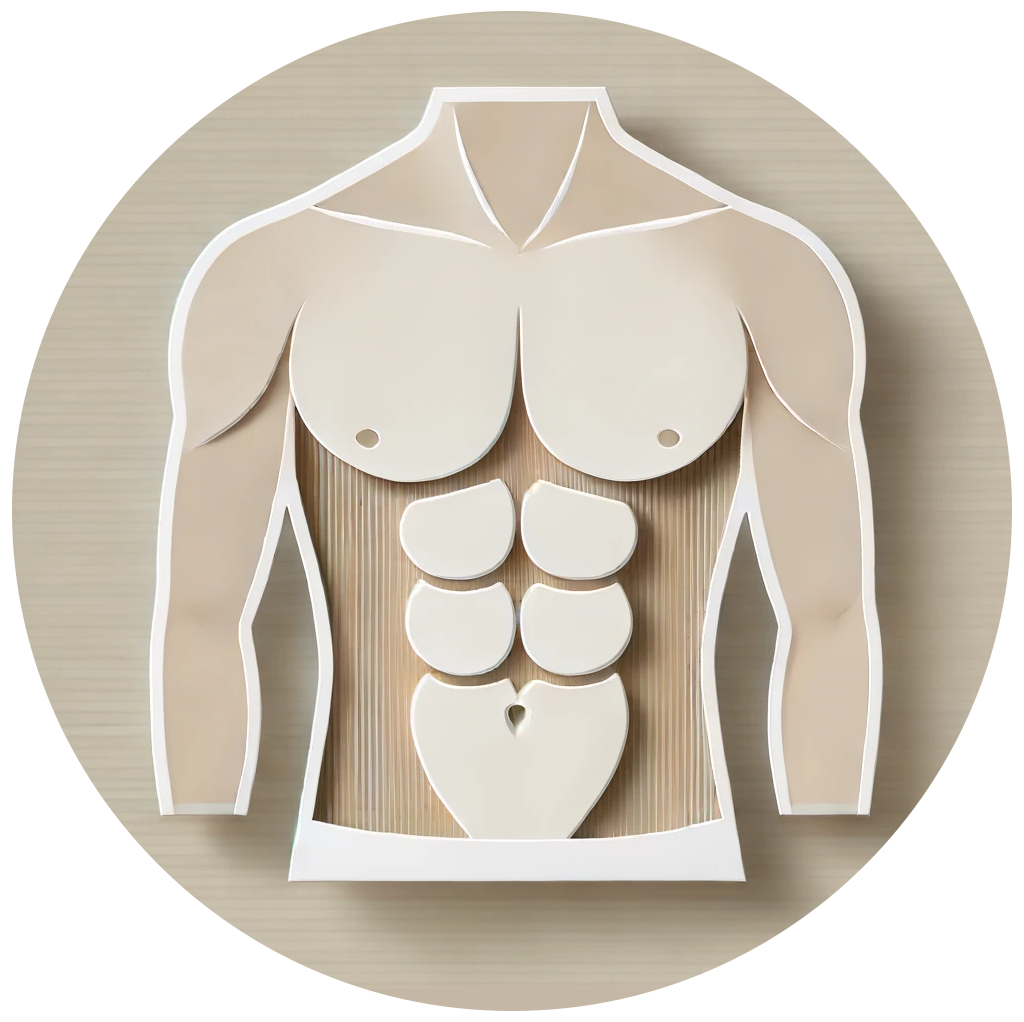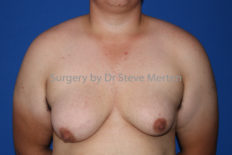- What Is FTM Top Surgery?
- Criteria to Meet Prior to FTM Top Surgery
- FTM Top Surgery Consultation
- FTM Top Surgery Procedure
- Hospitalisation After FTM Top Surgery
- FTM Top Surgery Recovery
- FTM Top Surgery Results
- Resuming Schedule After FTM Top Surgery
- FTM Top Surgery Complications
- FTM Top Surgery Scars
- FTM Top Surgery Before & After Photos
- FTM Top Surgery Cost
Meet your Surgeon

Dr Steve Merten
Meet your Surgeon
Education and Training:
- Bachelor of Medicine, Bachelor of Surgery from Sydney University in 1991
- Fellow of the Royal Australasian College of Surgeons (FRACS) in 2001
- Fellowships in Aesthetic (Cosmetic) Surgery at the Melbourne Institute of Plastic Surgery and Monash University
- Fellowship in Breast Reconstruction at the University of British Columbia, Canada
What Is FTM Top Surgery?
Female to male chest gender affirmation or “top” surgery refers to surgery used to contour the chest to a more masculine shape. It is one step that can be involved in the process of gender affirmation. The procedure aims to contour the chest such that it has a more masculine appearance. Other benefits include:
- Improved confidence and self esteem
- Reduced social and/or physical dysphoria
- No need for breast strapping
Dr Merten is recognised as one of the leading specialised surgeons working with “top surgery” patients and performs gender affirmation chest and breast surgery. Dr Merten is recognised as a preferred surgeon for top surgery within the closely knit LGBT community and his work is often espoused in their YouTube documentaries.
- Disclaimer: YouTube content may not be suitable for children due to some strong language
What Criteria Needs to Be Met Before FTM Top Surgery?
Special criteria need to be met to even consider FTM top surgery. This includes, but is not limited to:
- Single letter of referral from a qualified mental health professional
- Persistent, well-documented gender identity disorder
- Capacity to make a fully informed decision and to consent for treatment
- Age of majority (18 years of age or older)
- If significant medical or mental health concerns are present, they must be reasonably well controlled
- You must not be smoking for at least 6 weeks before and after this surgery.
Masculinising hormone therapy is not a pre-requisite to qualifying for a mastectomy; however, if you are starting testosterone Dr Merten recommends waiting at least 6 months for physical changes to stabilise.
What to Expect in the FTM Top Surgery Consultation?
At your first consultation, Dr Merten will go over your health history (including current medications, allergies, and past treatments), discuss what you hope to achieve with FTM top surgery, and perform a physical examination.
During your exam, your breast health and appearance will be carefully assessed. This includes checking for any tissue abnormalities, lumps or asymmetries. Dr Merten will also measure the size, shape, positioning, and symmetry of your breasts. These details can help him design a custom surgical plan for your FTM top surgery, which he will discuss with you in detail.
Photographs will be taken of your breasts to further assist with treatment planning and to evaluate the improvement achieved in your post-operative results. These images are always kept strictly confidential within our practice.
More information about your procedure and recovery will also be explained, including what to expect after surgery and possible complications you should be aware of. Throughout your consultation process, you are encouraged to ask questions and express any concerns you may have.
At your second consultation, Dr Merten will provide a more in-depth look at your surgery, going over your options and further explaining possible risks and complications that may develop.
It is vital to have a full understanding of the likely outcome for your own chest, and go into surgery with both positive health and attitude. It is imperative that you are not smoking before or immediately after this surgery, as this may have major complications and a much less satisfactory outcome.

What Does the FTM Top Surgery Procedure Involve?
FTM top surgery will vary depending on the type of mastectomy undertaken – either a subcutaneous mastectomy or a total mastectomy with nipple/areolar repositioning. These operations have different outcomes, particularly in terms of scars and nipple sensation; however, in creating a more masculine appearance, surgery always aims where possible, to preserve as much nipple sensation as possible, with as minimal scarring as possible.
Regardless of which technique is employed, the procedure generally involves a combination of the following:
- Mammary glands and fatty tissue are removed
- Removal or tightening of excess skin
- Elimination of the inframammary fold
- Reconstruction and repositioning of the nipple and areola so that it is more proportionate and aesthetically pleasing to the chest
Note that the muscles of the chest are not altered. After surgery drains will be inserted to remove any excess fluid/blood. For more details about each mastectomy technique, see below:
Subcutaneous Mastectomy
This is where the nipple and areolar are not removed, but instead lifted up and the breast tissue accessed and removed from beneath. This option only works well for smaller breasts where there is minimal skin excess, and the skin is good quality. If there is no excess skin and the nipple position or areolar diameter don’t need to be reduced, then the incision is only made along the bottom of the areolar (“Keyhole Top Surgery”), and as such, scarring is minimal. More commonly, either the skin also needs to be tightened, the nipple lifted, and/or the areolar circle size made smaller, or then the incision is made around the entire areolar (“Peri-areolar Top Surgery”)
Total Mastectomy with Nipple/Areolar Repositioning
Often known as the “double incision” mastectomy, this technique is usually required for moderate to large breasts, when there is a larger amount of excess skin and drooping of the breasts. The technique our plastic surgeon, Dr Steve Merten, uses for this surgery aims at placing the scars in the most natural and subtle position – below the breast and angling towards the armpit behind the hollow of the chest muscle.
In this surgery, the nipple/areola needs to be moved and positioned into the correct masculine position. Whenever possible, Dr Merten does this by maintaining internal vascular connections to the nipple, which allows the most natural outcome, best healing and increased potential for nipple sensation. This is known as a “pedicled” technique. If this is not technically possible, then the nipple/areolar is repositioned as a “graft,” where it is completely removed, then sewn into the new position.
After the nipple/areola is prepared, the breast tissue is removed and the chest contoured by making an incision under the pectoralis muscle, and extending towards the armpit, with the aim of the final scars sitting in the male shadow line of the chest muscle. Once the ideal chest contour has been achieved, the nipple/areolar tissues that were put aside are sewn back onto the chest. This is either done as skin grafts (in the ideal position and size for a masculine chest) or in the “pedicle” technique (holes are cut in the new position, and the internally-connected areolar brought through and put into position).
- Disclaimer: YouTube content may not be suitable for children due to some strong language
Dr Merten is an active member of ANZPATH and WPATH.
Will I Need to Be Hospitalised for FTM Top Surgery?
Female to male chest surgery is performed in hospital, under general anaesthetic, and takes up to 4 hours. It usually requires an overnight stay in hospital. All surgeries are performed in fully accredited facilities ensuring your safety.
What Is the FTM Top Surgery Recovery Like?
Advancements in anaesthesia over recent years has meant more comfort for patients – less pain with minimal post-operative sedation and nausea and a quick recovery to “feeling normal.” The anaesthetists are highly skilled and experienced in modern techniques and devoted to keeping you comfortable.
It is normal to feel lightheaded and tired as the anaesthetic gradually wears off. You may feel sore as well as have some swelling and discomfort, but these should quickly fade.
Dressings will be placed over your incisions as well as nipples if you had a nipple graft. Drains used to assist in healing and reduce swelling will be removed the next day. A chest garment will be used to assist further in reducing swelling and bruising and aid in final contour.
When Will I See My FTM Top Surgery Results?
Your breasts heal over a period of time after chest surgery. Initially there will be some swelling and bruising, and your breasts may look larger and fuller than the final result. Most of the swelling subsides over the first week or two, and will resolve by about 6 weeks. After 8 weeks, we recommend the use of a Scar Management Cream, available for purchase at the clinic. This is to be gently massaged in the incision line twice daily. The friction of massage helps in the maturation and fading of any scars.
Swelling will generally fully subside after 3 months.
When Can I Resume Day-to-Day Activities After FTM Top Surgery?
In most cases, you can resume normal activities within one week’s time.
Strenuous activity and sporting activities should be avoided for at least 4-6 weeks post surgery. If you are keen to keep fit, easy walking is permitted, at a level that is comfortable to you.
What Complications Can Arise from FTM Top Surgery?
All surgical procedures come with some degree of risk and possible complications, such as:
- Infection
- Bruising, bleeding, or haematoma formation
- Scarring
- Anaesthesia-related issues
- Allergy
- Deep vein thrombosis
- Pain
Risks and complications specific to female to male chest surgery include:
- Nipple malposition
- Nipple necrosis
- Altered nipple sensation
- Breast asymmetry
- “Dog ears”
- Unfavourable cosmetic result
More specific details regarding the risks and complications associated with your FTM top surgery procedure will be discussed with you during your consultation process.
Will I Have Scars from My FTM Top Surgery Scars?
Given incisions are made, there is a potential for scarring. There are different techniques however to minimise scarring and whenever possible. Dr Merten utilises your natural nipple areola lines. For larger breasts, or where the skin quality is stretched and damaged, then usually a scar is also required in the fold beneath your breast. Muscle development in the area as well as growth of chest hair can assist in camouflaging potential scars.
We aim to achieve scars of superior quality and minimal length; however, your personal anatomy and healing pattern are ultimately responsible. Dr Merten will discuss the various types of reduction with you and help you to choose the one most appropriate to your problem and in line with your goals and expectations.










































